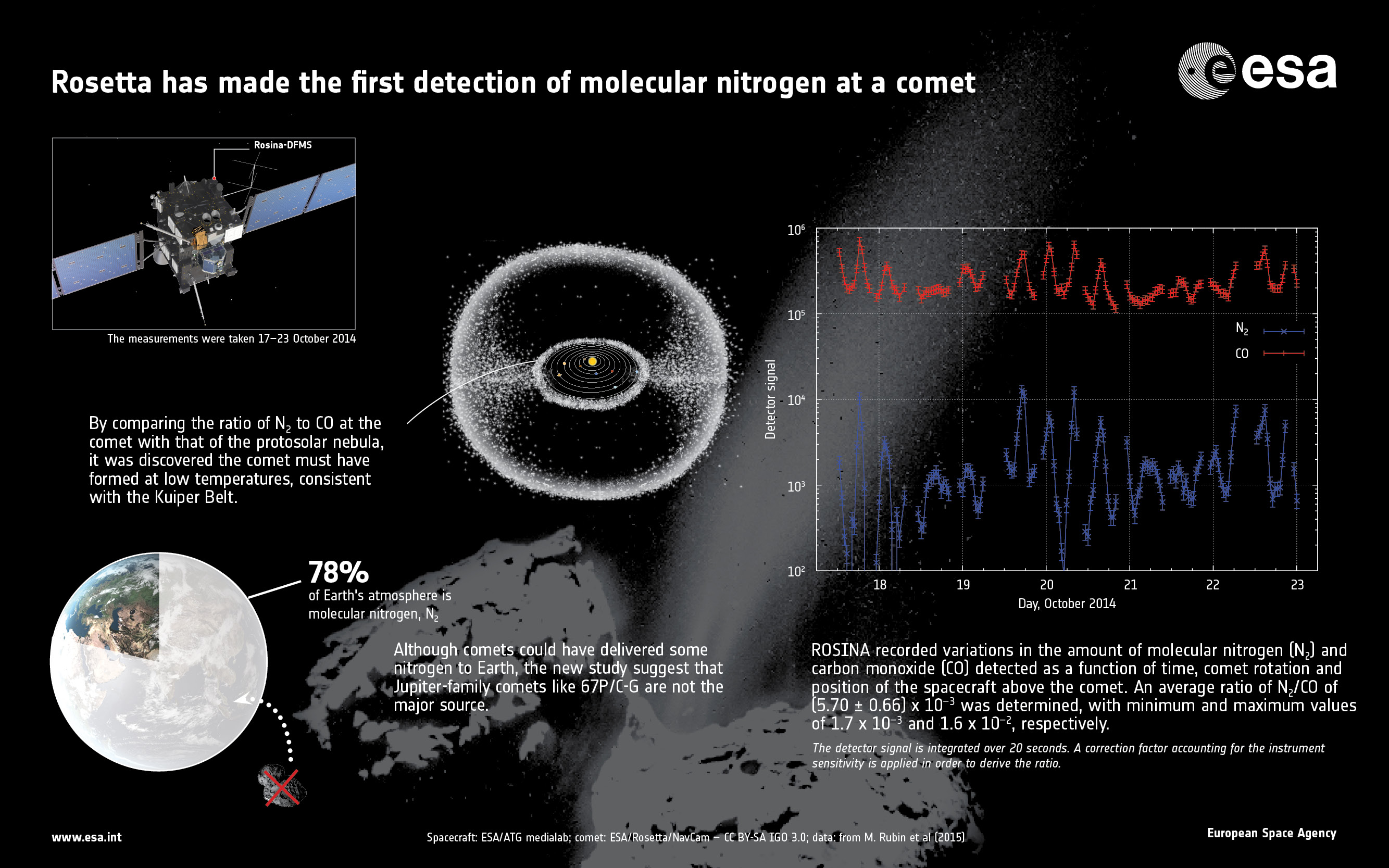
Rosetta, humankind’s first spacecraft to orbit a comet, has now made the first detection of molecular nitrogen (N2) at a comet. Meanwhile, the European Space Agency (ESA) probe continues searching for signals from Philae, humankind’s first probe to land on the surface of a comet, named 67P/Churyumov-Gerasimenko.
The discovery of molecular nitrogen “provides important clues about the temperature environment in which Comet 67P/Churyumov–Gerasimenko formed,” says the science team.
The key observations were gathered as part of 138 measurements made during a week-long period from Oct. 17-23, 2014, by the probe’s Rosetta Orbiter Spectrometer for Ion and Neutral Analysis (ROSINA) instrument.
The results also serve in determining the location where the comet formed: in the frigid outer reaches of our Solar System.
“The in situ detection of molecular nitrogen has long been sought at a comet.”
Previously, nitrogen had only been found as part of other molecules such as hydrogen cyanide (HCN) and ammonia (NH3).
Scientists speculate that the molecular nitrogen was trapped in ices at extremely low temperatures, roughly ranging from –253ºC to perhaps –220ºC in the protosolar nebula.
Molecular nitrogen is the main source of nitrogen that was incorporated into the gas planets during their formation. It also comprises the main components of Earth’s atmosphere as well as that of Saturn’s moon, Titan. It is also a constituent of atmospheres and surface ices on Pluto and Neptune’s moon Triton.
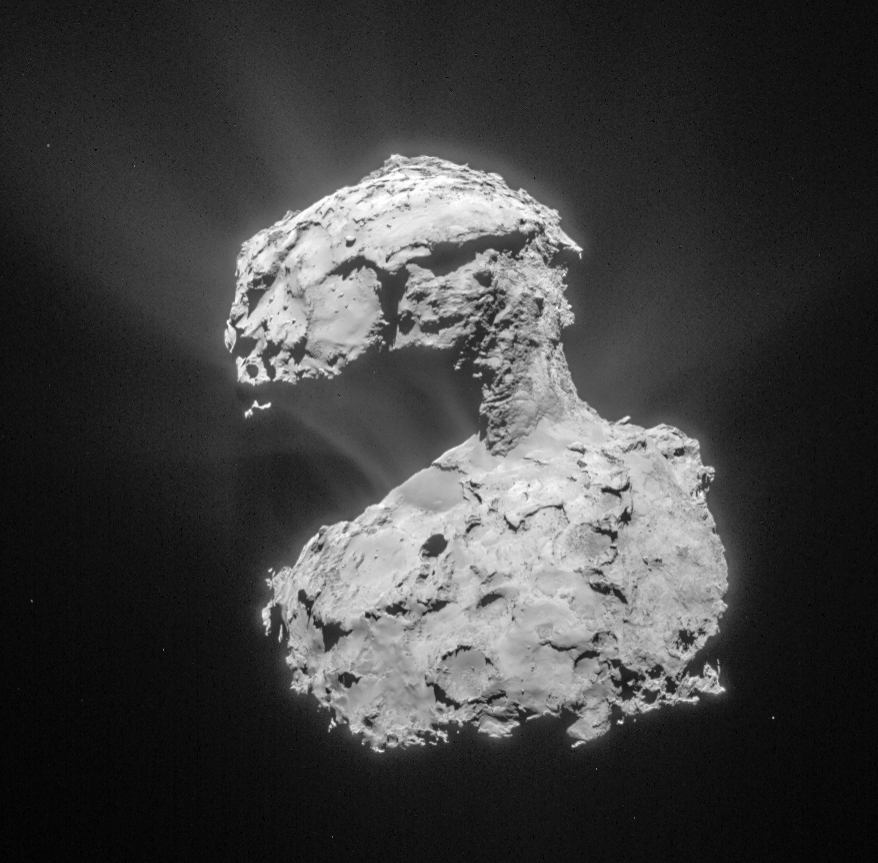
Scientists used ROSINA’s measurements to compare the ratio of molecular nitrogen to carbon monoxide (CO) to those of the protosolar nebula.
From these data they determined that comet 67P must have formed at very low temperatures and in the distant reaches of our Solar System, in the region known as the Kuiper Belt.
Rosetta was approximately 10 kilometers (6 miles) from the center of the comet at the time of the observations—several weeks prior to the deployment of the piggybacked Philae landing craft.
“Identifying molecular nitrogen places important constraints on the conditions in which the comet formed, because it requires very low temperatures to become trapped in ice,” says Martin Rubin of the University of Bern, in a statement, and lead author of the paper presenting the results published on March 19, 2015, in the journal Science.
The diminutive dual-lobed body shaped like a rubber ducky measures only about 4 kilometers (2.5 mile) wide.
Comet 67P/Churyumov–Gerasimenko is a Jupiter-family comet.
“The trapping of molecular nitrogen in ice in the protosolar nebula is thought to take place at temperatures similar to those required to trap carbon monoxide. So in order to put constraints on comet formation models, the scientists compared the ratio of molecular nitrogen to carbon monoxide measured at the comet to that of the protosolar nebula, as calculated from the measured nitrogen to carbon ratio in Jupiter and the solar wind,” wrote the team.
ROSINA’s measurements determined that the ratio for Comet 67P/Churyumov–Gerasimenko turns out to be about 25 times less than that of the expected protosolar value.
The scientists think that this depletion may be a consequence of the ice forming at very low temperatures in the protosolar nebula.
But even at the low temperatures ranging from –253ºC to perhaps –220ºC, the molecular nitrogen is inefficiently trapped “in either amorphous water ice or cage-like water ice known as a clathrate” and causes the depletion.
A further depletion was caused naturally over time by either radioactive decay of the comet’s radioactive nuclides, or heating as 67P naturally orbits closer to the Sun which triggers the nitrogen outgassing seen in today’s measurements.
“This very low-temperature process is similar to how we think Pluto and Triton have developed their nitrogen-rich ice and is consistent with the comet originating from the Kuiper Belt,” says Martin.
The results also indicate that it’s unlikely that Jupiter-family comets like Comet 67P/ Churyumov–Gerasimenko are the source of Earth’s nitrogen.
“It’s another piece of the puzzle in terms of the role of Jupiter family comets in the evolution of the Solar System, but the puzzle is by no means finished yet,” says ESA’s Rosetta project scientist, Matt Taylor, in a statement.
“Rosetta is about five months away from perihelion now, and we’ll be watching how the composition of the gases changes over this period, and trying to decipher what that tells us about the past life of this comet.”
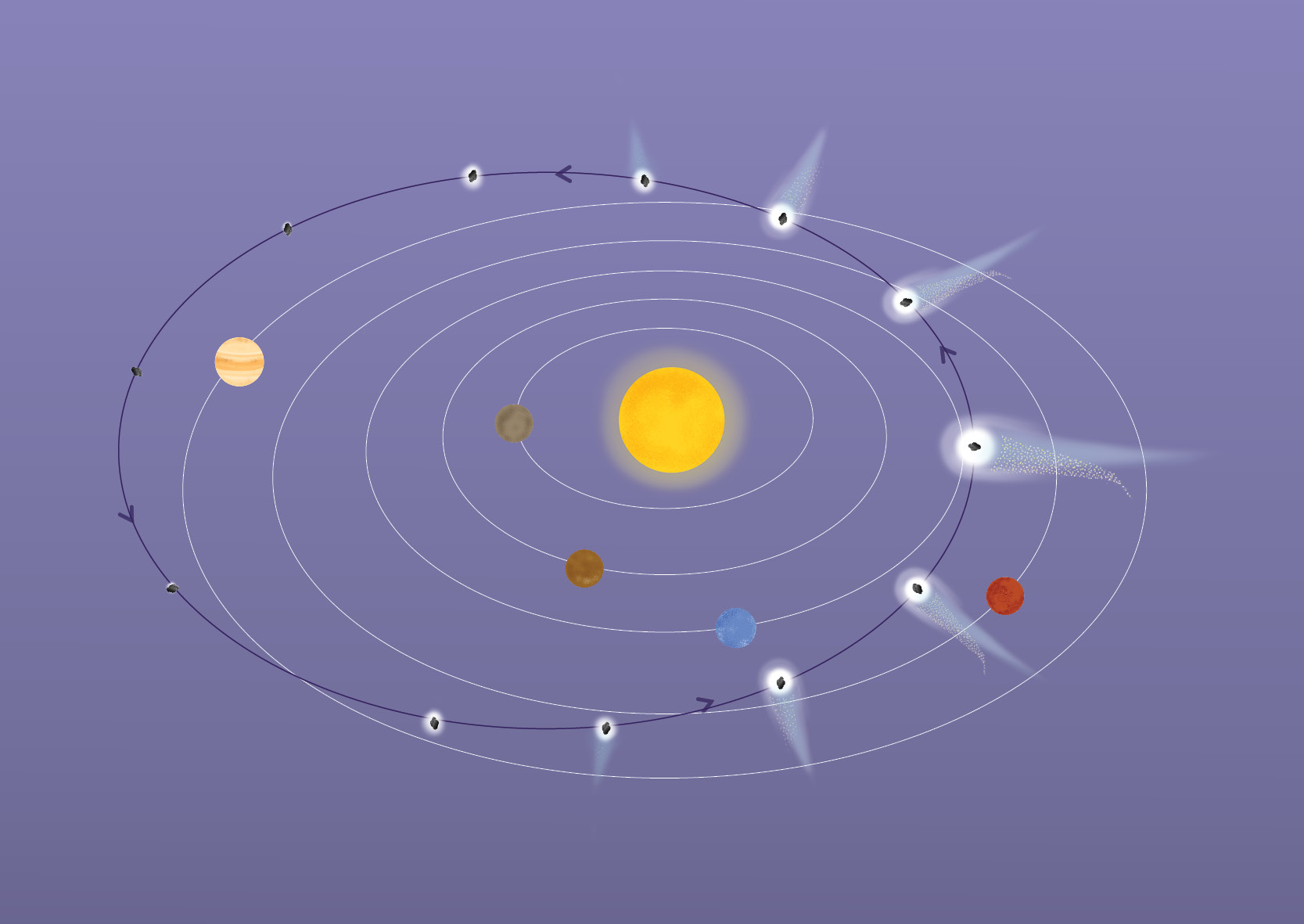
Scientists leading Europe’s Rosetta orbiter mission have discovered a wondrous array of surface features, cracks, and jet-spewing pits at comet 67P.
The spacecraft arrived in orbit at Comet 67P/Churyumov–Gerasimenko on Aug. 6, 2014, after a decade-long interplanetary journey of some 500 million kilometers (300 million miles) from Earth.
Rosetta is on a mission of cutting edge science to elucidate our origins.
Using a suite of 11 state-of-the-art science instruments, it is investigating comet 67P in unprecedented detail from an unprecedented up-close vantage point.
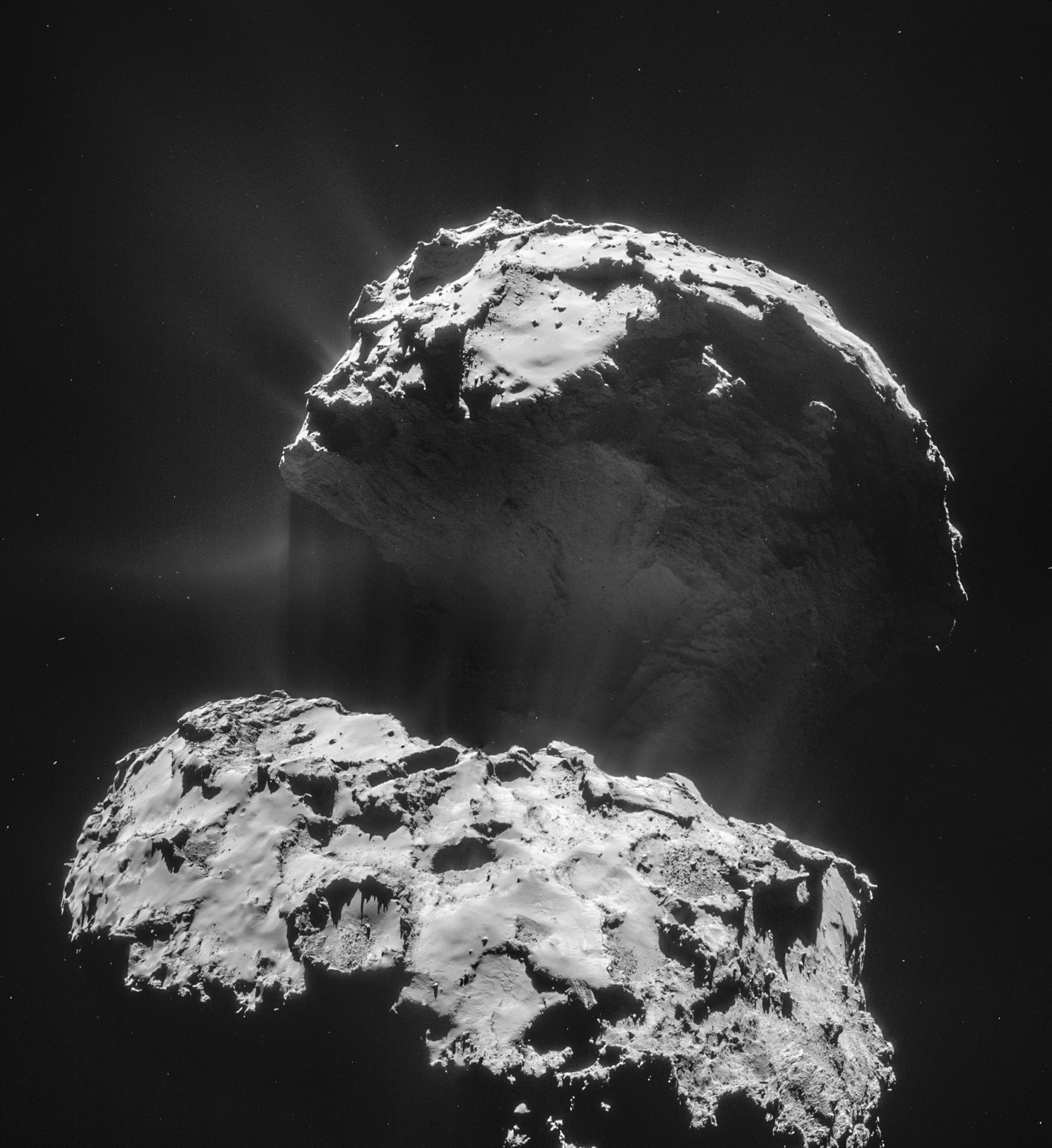
Meanwhile, the team leading ESA’s history making Rosetta/Philae comet mission continues seeking signals from Rosetta’s accompanying Philae comet lander in an attempt to learn its fate, resume communications, and restart science operations from the surface of Comet 67P/Churyumov-Gerasimenko.
They resumed intensive search operation to listen for signals on March 12.
It was some 4.5 months ago, on Nov. 12, 2014, that Philae became the first spacecraft in history to touch down on a comet’s nucleus, and did so after unexpectedly bouncing three times before finally coming to rest in a heavily shaded location with minimal sunlight, which severely restricted the amount of energy available.
The probe went into hibernation about 60 hours after landing when the battery power was exhausted and there was insufficient solar power generated to wake up and work.
To date no signals have been detected from Philae, but the hunt from the beloved little ship continues!
“Perhaps it is still too cold for the Philae lander to wake up on Comet 67P/Churyumov-Gerasimenko. Maybe its power resources are not yet sufficient to send a signal to the team at the German Aerospace Center (Deutsches Zentrum für Luft- und Raumfahrt; DLR) Lander Control Center,” says the Philae team at DLR.
It is hoped that attempts in April may meet with better success when more sunlight is available.
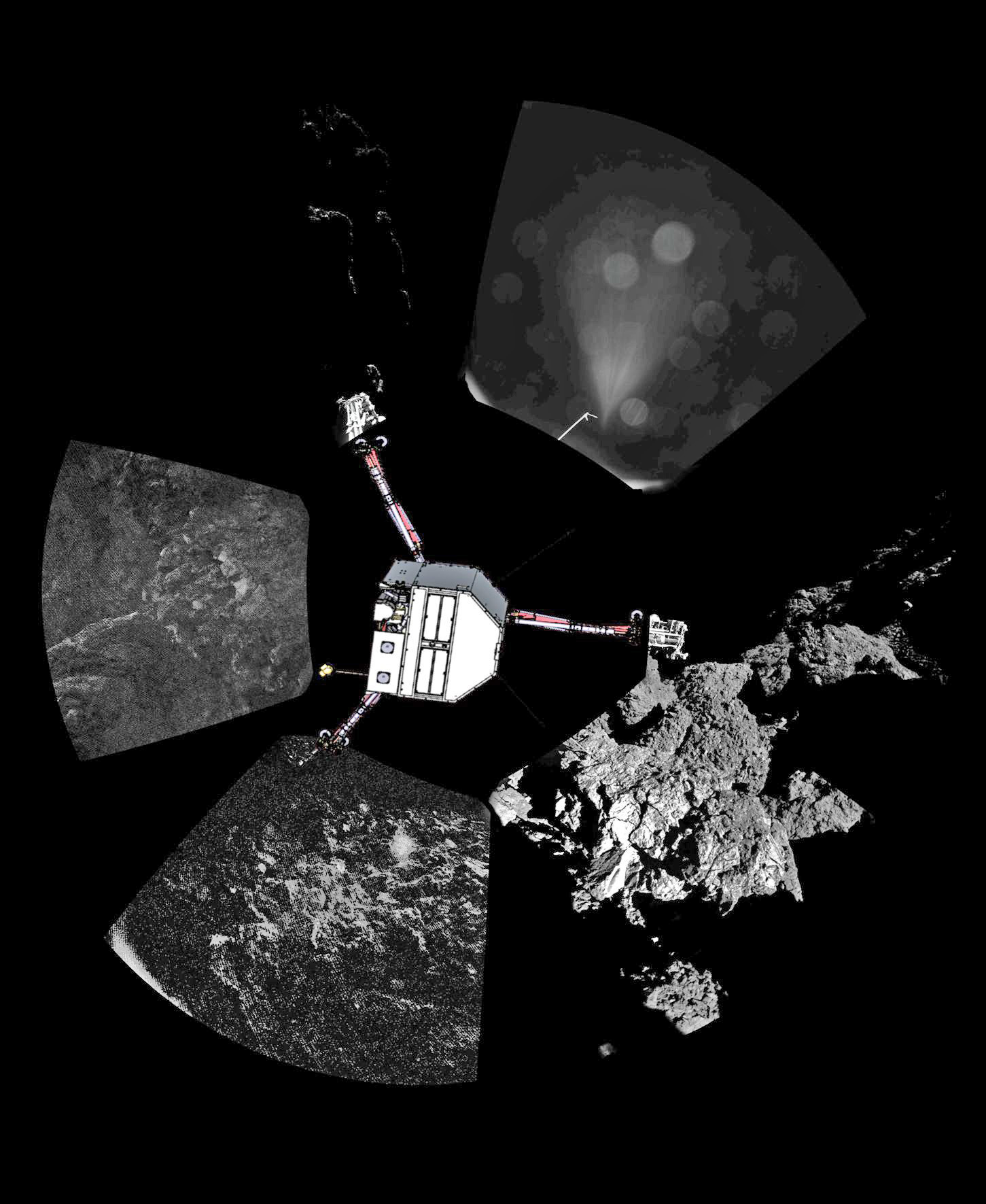
Stay tuned here for continuing developments.
Want to keep up-to-date with all things space? Be sure to “Like” AmericaSpace on Facebook and follow us on Twitter: @AmericaSpace
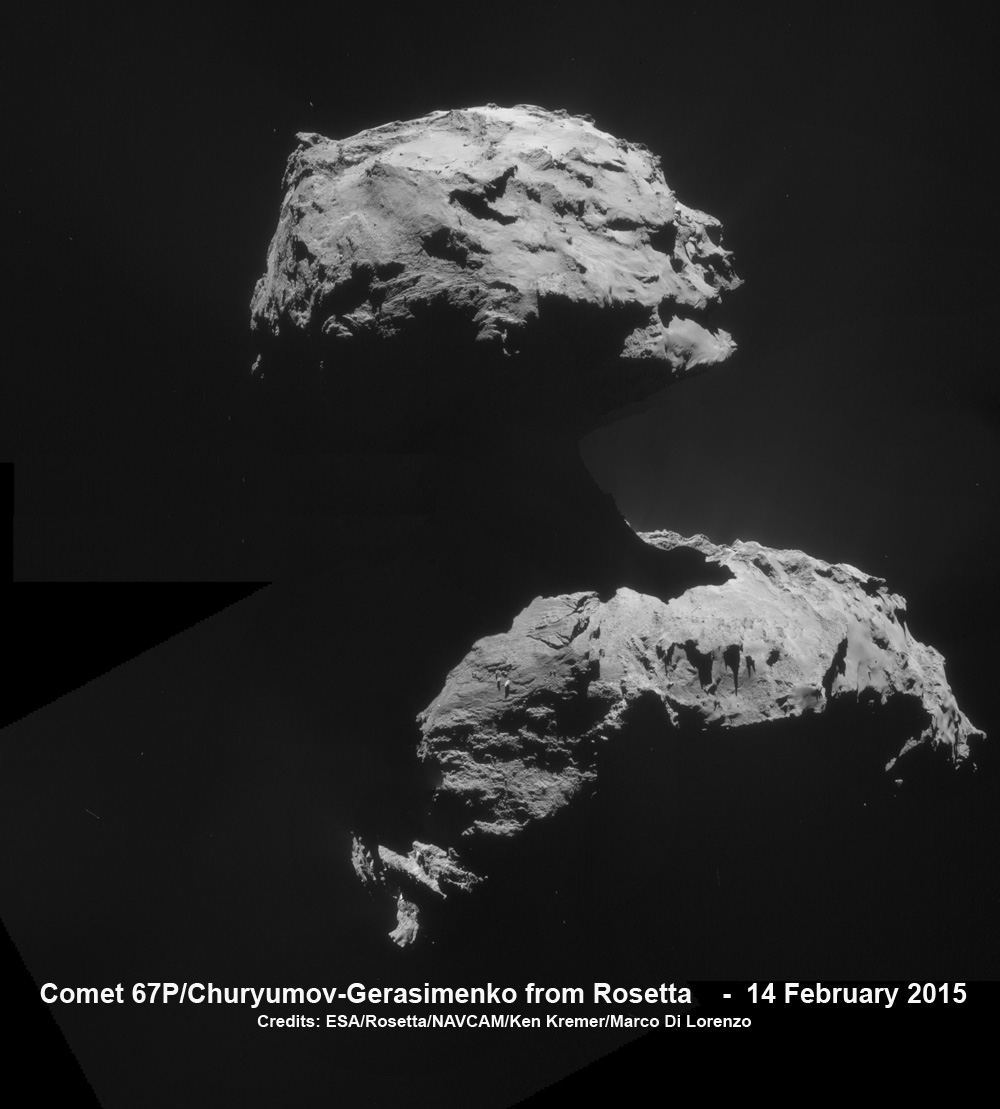




One Comment
One Ping
Pingback:Rosetta and Philae Capture First Detailed Magnetic Measurements of a Comet Nucleus « AmericaSpace